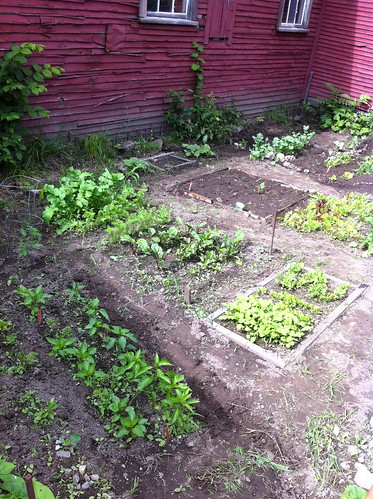
It was a very wet spring, and heavy rains have caused flooding and saturation which has made it hard for Vermont farmers to get their crops in the ground. I've experienced this on a much smaller scale with our garden - right after our first planting, heavy rain and thunderstorms caused water to pour through the garden, washing away some seedlings, and burying others under wet silt.
Our garden is on land that our neighbor has generously loaned us, on the site of an old mill (and yes, he tested the soil for contamination... nothing troubling came up). The garden is fenced in, but the local woodchuck has still managed to get in a few times. Water drains into the garden from a grassy area nearby, and drains out of the garden under a building. There it is channeled away and some of it eventually finds its way to Lake Champlain via the Otter Creek watershed.
I wanted to improve the drainage of our garden, but I also didn't want to cause problems with erosion or too much water rushing under the buildings at once. I ended up setting up a series of little canals and retaining walls made of cobbles (there are plenty in the garden, because we're on old river deposits)... but also creating areas where the water can slow down and soak in, rather than flushing away.
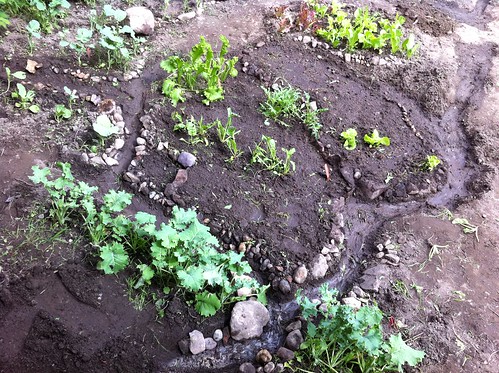
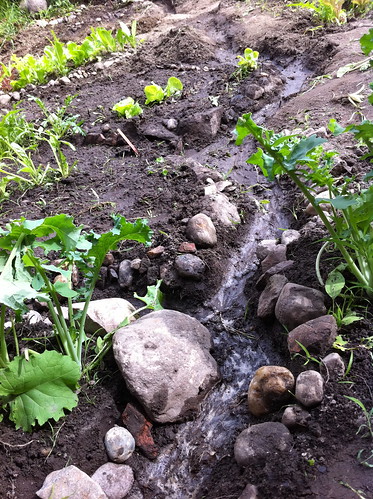
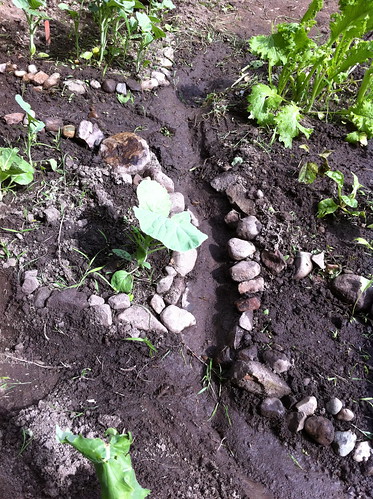
(also note the woodchuck damage).
The system I set up emulates how Vermont farmers have farmed in the past - using rocks from the fields to build walls to reduce erosion and delineate different areas. I tried to work with the topography of the garden, and to channel water where it 'wanted' to go anyway. I'm also hoping to use permaculture methods - rather than deeply tilling the soil, creating more permanent areas that will hold water and nutrients.
The portion of the garden planted by one of my roommates is a bit more 'traditional' looking but still channels water away. We'll see which method works best.
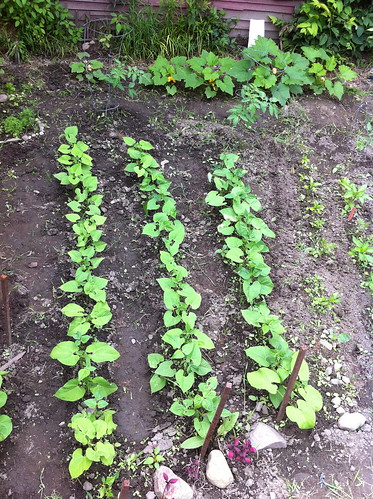
We've also got a rain barrel set up, so far this has provided enough water to keep things watered between storms. It's been a wet summer though, and if we have a drier period I'll be dragging water in from further away - there isn't a hose nearby.

So far there has been one heavy downpour and the channels held up. We'll see if they hold up to the severe thunderstorms predicted this afternoon, too.

So did they hold up? I've seen channels like this made in gardens in India, but they were for irrigation, not drainage. The gardeners could pour water in at one end (near a well or tap) and it would flow into the flower-beds. They could determine how the water flowed by putting earth dams to direct the water before starting to pour it in.
ReplyDeleteIt's done a pretty good job! The big threat to our garden turned out to be a groundhog, not flooding. I've heard of irrigation like you describe as being a bit like a form of computer, with all the 'logic gates' and such. Very neat, and fun stuff...
ReplyDelete